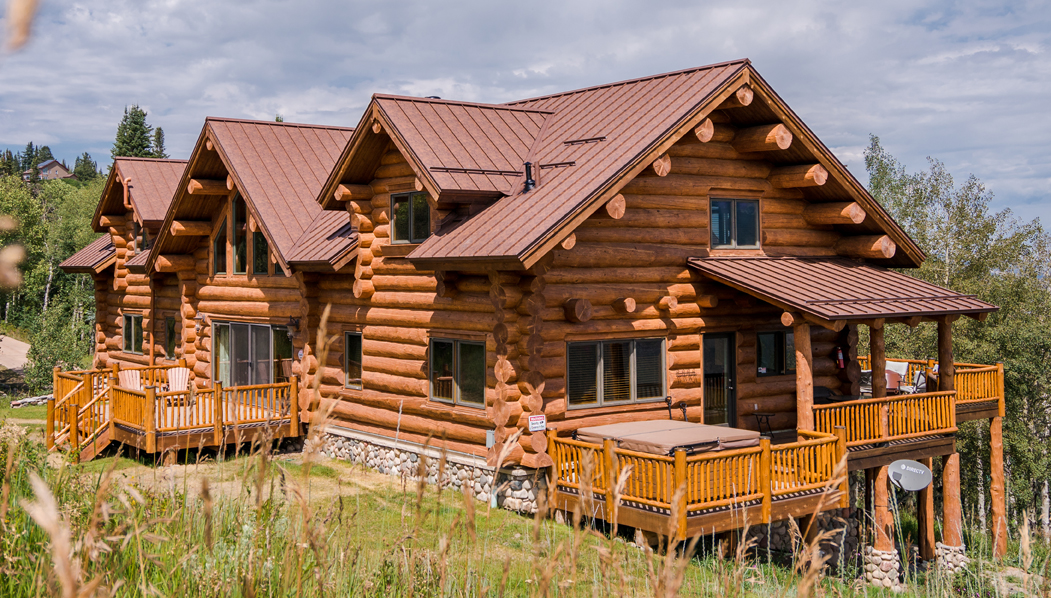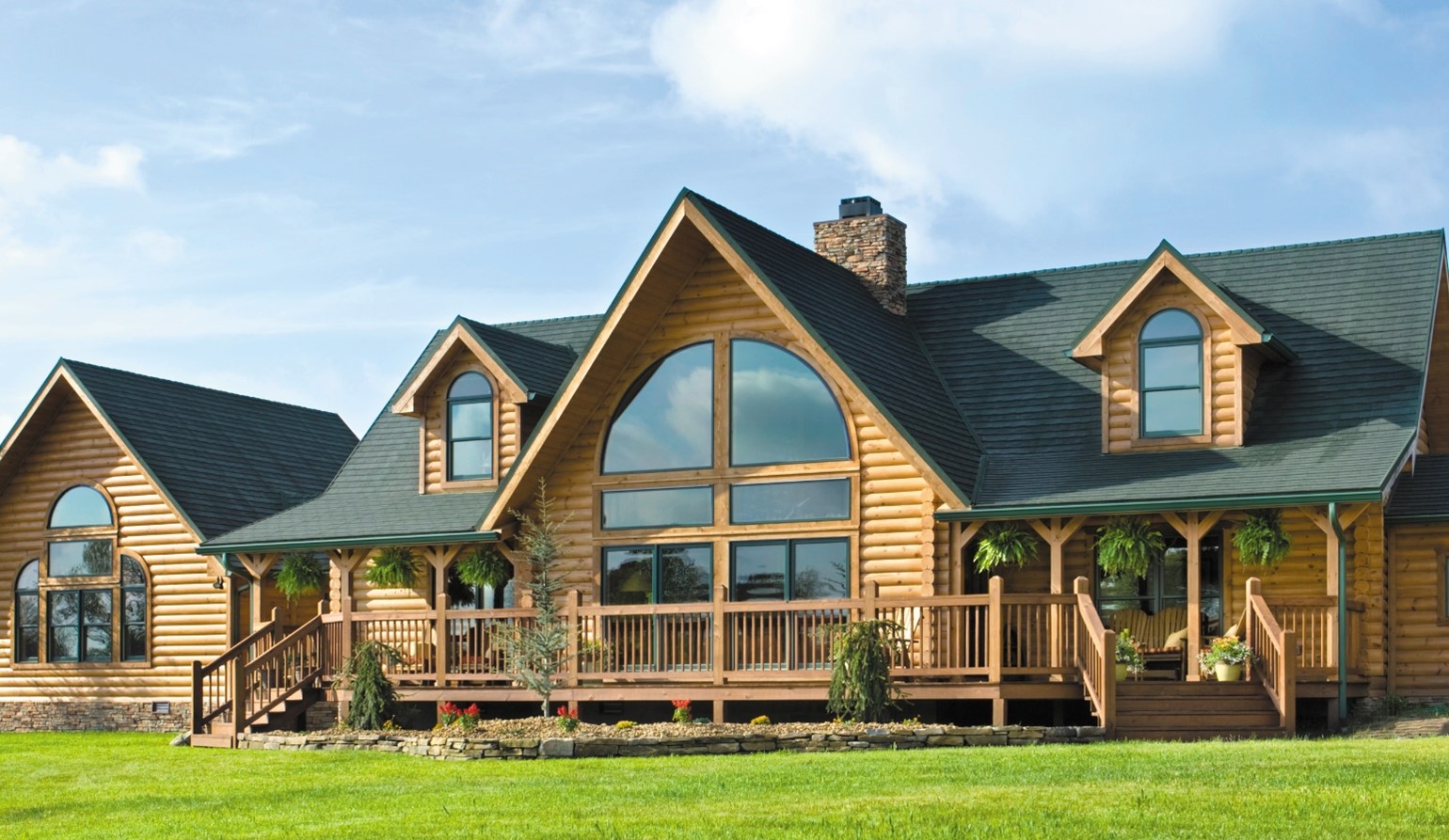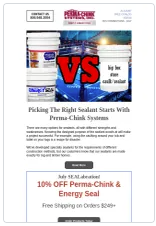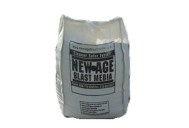 Perma-Chink Systems, Inc
Log & Timber Home Care Experts
Perma-Chink Systems, Inc
Log & Timber Home Care Experts
Michael
Curious to Know What Makes Your Log Home Exterior Different From the Rest?
Perma-Chink Systems is dedicated to exceeding expectations, ensuring that our products reflect both our commitment to quality and our responsibility to the community. That’s why we go the extra mile to ensure our wood stains and finishes are crafted from the most environmentally friendly materials available. Our commitment to sustainability doesn’t just stop there—our products also deliver a refined, furniture-like finish that enhances the beauty of your wood. But unlike the furniture coatings, our finishes are designed to breathe to let the moisture evaporate from your logs.

LIFELINE stains and finishes from Perma-Chink Systems stand out for several reasons:
EDDIE McDANIELS – DIRECTOR OF OPERATIONS, PERMA-CHINK SYSTEMS, INC.

I’ve had the privilege of being with Perma-Chink Systems for 32 years. My journey began when I was unemployed and a friend working at Perma-Chink informed me of an opening. I applied, was hired, and have been dedicated to the company ever since.
Discover the revolutionary products that have transformed log home maintenance! Visit Perma-Chink Systems today to find everything you need to protect and beautify your log home.
Safeguard Your Log Home:
Top Annual Maintenance Tasks to Prioritize

Owning a log home comes with a unique set of responsibilities, particularly when it comes to maintenance. To keep your log home in top condition, regular annual upkeep is essential. From inspecting the exterior for signs of wear to ensuring your home is well-sealed against the elements, these tasks not only preserve the beauty of your log home but also protect your investment. In this article, we'll explore the key annual maintenance tips every log homeowner should follow to ensure their home remains a rustic haven for years to come.
We are excited to share a very unique project, something that could very be a first for this company - a log home interior of a van, sealed with Perma-Chink. Yes, a van as in the automobile variety.
This project is a fantastic example on the flexibility of our products, and the creative imagination of our customers. We'll turn over the background of the project to the customer, Barbara P., in their own words.
We're excited to announce the return of Mandy Arizala to Perma-Chink Systems as our new Controller. Mandy, a proud graduate of the University of Washington, originally joined Perma-Chink Systems in 2003 as our Accountant. Her unwavering dedication and financial expertise left a lasting impact during her time with us. After departing Perma-Chink Systems to further her desire to gain additional experience and hone her skills, Mandy returns with a wealth of knowledge and fresh insights, ready to continue her impactful journey.
Outside of her professional endeavors, Mandy finds true joy in her strong family values. Every moment shared with her husband, Oswaldo, and their six grown children is a cherished memory filled with love and laughter. Whether gathered around the dinner table, embarking on new adventures, or dancing to the vibrant rhythm of salsa, family remains the cornerstone of her life.
We're thrilled to have Mandy back on board, and we're confident that her dedication, expertise, and love for family will once again enrich the Perma-Chink Systems community. Welcome back, Mandy!
PERMA-CHINK SYSTEMS RETURN POLICY
Return Policy
Returns are accepted for purchases from Perma-Chink Systems, Inc. only, either from a store branch or our Online Store.
If you are making an exchange or a return, we make it easy! Contact us at 1-800-548-3554 for store purchases, or 1-888-838-5070 for online purchases.
- We will accept returned items within 90 days, with no restocking fee. Returns after 90 days will not be accepted.
- You must request a Return Merchandise Authorization (RMA) from Perma-Chink Systems, Inc. prior to returning any merchandise.
- Have your proof of purchase ready when requesting your RMA.
- All items must be returned in new, unopened, resalable condition.
- If you are returning merchandise from an Invoice that qualified for Free Freight, we will deduct the freight amount from your return, according to our shipping charges. If you received Free Freight for our Customer Loyalty Program or Promotional Coupon and return the entire order, we reserve the right to charge the freight to and from your location, if applicable. If the order is refused upon delivery, we will charge freight to and from your location.
- When merchandise is returned, credit will be issued in the form of original payment or applied to your account.
Merchandise exchanges are processed without any fee within 90 days of purchase, no exchanges will be accepted after 90 days.
No returns are accepted on Lifeline Accents or Custom Color Orders, as they are tinted per customer request, so it is important to try the free samples first to determine the color you would like before you purchase the tinted product.
Return Methods – choose from one of the following options:
- Ship it yourself – Securely package and send the merchandise by USPS, FedEx or UPS to the Perma-Chink System address provided at the top of your packing list.
- Ask us to arrange shipping – Request that we issue a Call Tag, securely package the merchandise, and a FedEx Driver will come to your house and pick-up your package that you have placed outside your door (please put a note on the package for return “For FedEx Call Tag”). We will deduct $11.50 per package for the Call Tag fee, plus the FedEx shipping charges, from your returned product(s). For a truck order (LTL) you will need to call Perma-Chink Systems and we will provide you with the return paperwork you will need to take, with the product, to the carrier terminal.
- In store – Visit your nearest Perma-Chink Systems location for immediate processing of your return.
Returning Wrong Item Shipped – choose from one of the following options:
- Ship it yourself – Securely package and send the merchandise by USPS, FedEx or UPS to your nearest Perma-Chink Systems location. We will reimburse you for the freight.
- Ask us to arrange shipping – Request that we issue a Shipping Call Tag, securely package the merchandise and a FedEx Driver will come to your house and pick-up your package that you have placed outside your door (please put a note on the package for return “For FedEx Call Tag”).
- In store – Visit your nearest Perma-Chink Systems location for immediate processing of your return.
The key indicators that your logs need a little R & R (repair and refinish)

It’s difficult to ignore a log home; they possess a personality that always turns heads. Such natural good looks are part of their allure, but the attention they command extends to more than admiration. Log homes need regular maintenance to protect their beauty, performance and longevity. Fortunately, a few simple indicators will tell you exactly what your home needs (and when!). Here’s how to assess your logs’ status:
What Makes A Topcoat Different?
There is a common thought out there that believe topcoats are just the regular finish without color added. However, our topcoats are completely different than our finishes because they do different things.
Lifeline Acrylic Gloss and Satin (G/S) and Sure Shine™ Gloss and Satin are totally different formulations than Lifeline Interior or any other finish. Lifeline Interior, Lifeline Accents, and Prelude™ contain a polymer system that offer some distinct adhesion advantages when applied to bare wood. Topcoats are designed to envelope those finishes, protecting the color and wood from environmental damage and everyday living.
New Age Blast Media Available Sizes
Call 1-800-548-3554 to Order
Features
- Made from recycled glass
- Superior to corn, walnut, sand or soda media


